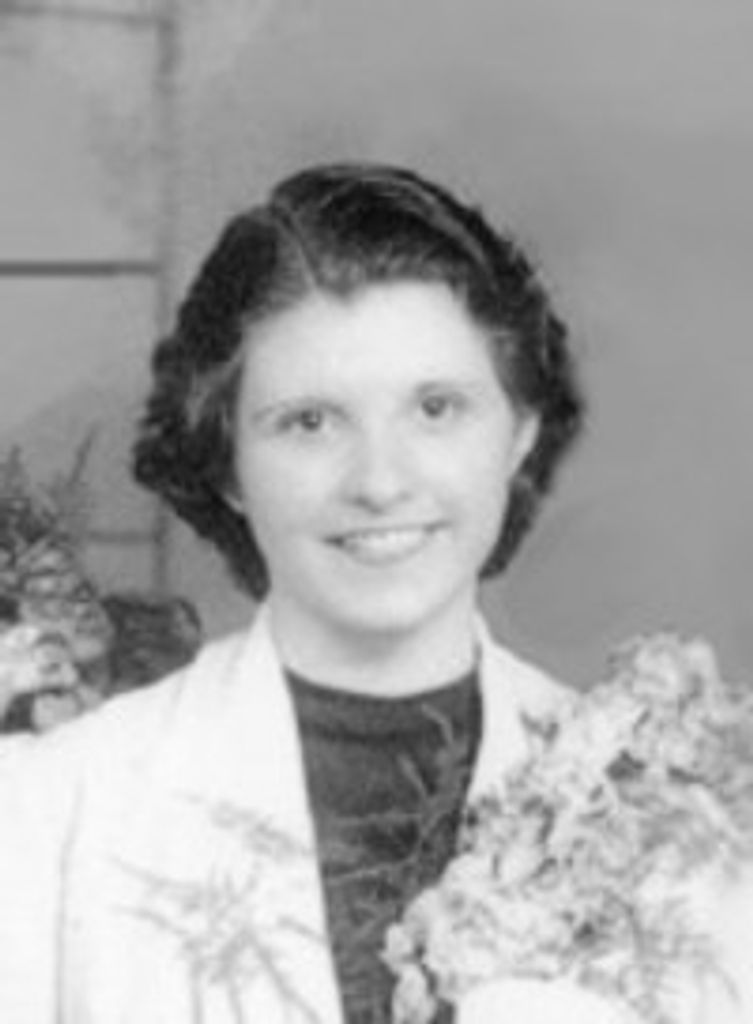

Ann Tucker
October 1, 1914 — February 10, 2005
Ann Tucker
ANN TUCKER, “Queen Ann,”
A Tribute from Her Family
IDAHO FALLS, ID -- Ann Tucker’s granddaughter
Cady could name anything just so. Shortly before Cady was killed by a
reckless driver at only age 11, she came up with a great moniker for her
grandmother, “Queen of Jacks.” Yes, Ann is the queen of us
knaves. The king, Harry, her husband, died from congestive heart failure
in 1991, and Cady, the princess, in 2002, leaving the rest of us, the
ever-imperfect knaves, over which to reign. But Ann, who left this world
on February 7, 2005, was no mere mortal.
She was a true queen. She carried herself with a certain
regality, beauty, glamour, and grace unmatched in this world, except by
perhaps, Kay, her eldest daughter, killed just out of college by a reckless
driver, and much later, Cady—both of them killed on August 15th.
When Mom became frail in 1999 and required in-home care, her caregivers
typically would ask her family: “What is her background? Does she
come from a wealthy family? There’s just something about her.”
We all suspected it. Mom, with her Rita Hayworth—but
better—good looks, just must have come from a line of royalty. We
haven’t confirmed that. . .yet. But Mom talked a lot about her Austrian
heritage. Her mother and father coming to this country from near Salzberg,
a beautiful city rich with culture and beauty—and Austria, one of
the great monarchies in history. I believe a clever genealogist could
not miss Mom’s royal blood, for it coursed through her heart and
eloquent speech, embroidery, sewing prom gowns and majorette uniforms,
preparing the tastiest cooking in the world, knitting hats and sweaters
with her original designs, and humor like nobody’s business. All
this without a cell of conceit. True royalty.
Ann Marie Putzi was born October 1, 1914, just before
World War I to Joseph Putzi and Magdelina Polichnig Putzi. They lived
in the small village of Streistad, near Salzburg, and came to this country
by boat, for a better life. They lived first in Hibbing, Minnesota, and
later moved to West Milwaukee where they had eight children: John, Katherine
or “Katie,” Mary, Joe Jr., Ann, Rose, George and Ethel. Joseph
was fluent in four languages: German, English, Slovenish, and Polish.
He was a very hard worker, employed by the village of West Milwaukee in
maintenance, and before that ran a tavern. He smoked his own meat, such
as half a pig, and made his own sausage. Ann’s mother, Magdelina,
“worked like a demon,” in the words of Ann’s last surviving
sibling, Ethel. Ann’s mother was quite the cook, cooking for the
family as well as meals for as many as 10 boarders at a time. One of Magdelina’s
soups was always served before every meal. “Soup Monday,”
“Soup Tuesday,” and so on, was the kids’ way to poke
fun and chronicle the week. Magdelina, fluent in German and English, made
German mainstays, Hazenfeffer, polenta and frika, potato dumplings, struedal
and Hungarian goulash. She also washed clothes for the nearby soldiers
home. Magdelina died at 59 from goiter complications and Joe, Sr., at
the age of 93.
One of Ann’s earliest accomplishments was establishing
herself as the “Queen of Jacks”—in this case, meaning
the game that was very popular among school children during the Depression—with
the ball and small metal jacks. Ann, her siblings and cohorts would play
jacks in the streets of West Milwaukee. Of course, it wasn’t an
Olympic event, but it was the rage in those days. In the words of Ann’s
sister Ethel, “Years ago, there was such a thing called jacks. I
would get sooo angry. I could never beat her at jacks. She was terrific
at that.”
Ann, with the thoughtless ease of a champ, taught her
daughters to play jacks—knowing all the games—“Onesies,”
“Twosies,” “Baby Game,” “Baby in the High
Chair,” “Pigs in the Pen,” “Scrapes and Scrubs,”
and “Upsy and Over.” If you’ve ever played Jacks, you
know mastering the advanced games is a feat of dexterity.
Ann was the only one of the eight children to graduate
from high school, from West Milwaukee High in 1932. Ethel said that whenever
the family wanted to know something, Ann would be called on. “She
was very well versed in a lot of things,” whether it was mathematics,
history, or writing. “She was a very intelligent girl.”
Ann said her family was protected from the pain of the
Great Depression by her dad’s hard work. She said her family always
had food on the table, even during those years, but her parents were frugal
to a fault, strict, and never suffered laxity. With the exception of the
closeness of Ann and Ethel, the family was too busy getting by to be tightly
knit.
But anyone who knew Ann knew her melodious voice and
that the way she got by was laughter. At 86, her sister Ethel said, “I
can still hear her laugh.” Ann’s children will always remember
her practical jokes and doubling over at the consequences. Perhaps replaying
personal experience with Depression humor, one of her sons got the inevitable
Christmas “gift” of a beautifully wrapped box filled with
nothing but peanut shells. The only questions were, in which box, how
hard Ann would laugh, and whether she’d lose control of her bladder.
Ann and Ethel would sing together while housecleaning.
While baking on Saturdays for her wonderful Sunday meals with her family—her
incredible apple pies, tasty cinnamon rolls, donuts, roasts from her “magic”
roaster that turned whatever was put into it into juicy, fragrant delectable,
unadorned delights—invariably, Ann would break into singing “I’m
Sending You a Big Bouquet of Roses,” “Be My Little Honey,”
“You Are My Sunshine,” or one of her favorite hymns such as
“Angry Words.” Her favorite Christmas carol, “Silent
Night,” she sang with the innocent sweetness of one of God’s
special angels.
After high school, Ann worked at the Hansen Glove factory
and later as a telephone operator—being known after by her friends
for having that “telephone operator voice.” Ann married Antone
Kassin in 1937 in Milwaukee. They had three children together. Katherine
or “Kay,” Nancy Kassin, was valedictorian of her high school
class, a talented artist, and was set to begin teaching elementary school
in Huron, South Dakota, when she was killed by a reckless driver at age
20. Gerald Antone Kassin is a college basketball coach at Altus, Oklahoma.
The Onida, South Dakota, high school team he coached won the State Championship,
and he was an assistant coach for the Texas Tech Red Raiders when they
made the nationals. Lawrence Antone Kassin retired a major from the Marine
Corps and served in Vietnam. Larry, a natural and charismatic leader,
has the unofficial record for the most unclaimed purple hearts in Marine
Corps history. He now teaches history and math and “life preparation”
at Topeka High.
In 1941, Tony Kassin died of peritonitis. In 1946, after
being a widow for six years in Park Lawn in north Milwaukee, Ann met Tech
Sergeant Harry Tucker, just home from his tour of duty in Europe after
the Big War. They met at a Big Band dance hall, the Eagles Club, in Milwaukee
and married October 26, 1946, in Winona, Minnesota. Harry, who died on
Pearl Harbor Day in 1991, would often tell the story of seeing the statuesque
beauty with those great legs and flowing dark brown hair.
“Of course, I asked Ann to dance,” Harry
would say. “She was the prettiest girl there, bar none.” Harry
said it seemed time stood still when Ann sized him up and down before
she said yes. But he must have passed inspection, he’d would say,
because on their first date seeing the Rita Hayworth movie Gilda sparks
were flying on and off the screen. Dad said he wanted to impress Mom with
his newly learned German phrases picked up at Hitler’s Hideout and
elsewhere in the Army. He later found out that Ann not only understood
his rudimentary “low” German, but spoke “high”
German, just never letting on about it during their courtship.
Their daughter Barbara was born in Milwaukee. After
getting her law degree and practicing Social Security law for several
years, she attended medical school, and is now focusing on getting her
son, Jamie, through his teens. In 1949, Ann and Harry moved with their
family to Harry’s mother’s farm near Hitchcock, South Dakota.
During this time, Ann would write to “Ettie,” “Every
day I cry,” and the letters would be stained with tear drops. You
see, South Dakota in 1949 was a shock for the “city girl.”
“The farm” had no running water, no electricity, no trees,
and only a smattering of people. But eventually, they got the basic amenities,
and the farm became a country haven for Ann—fresh air, mile-long
walks to get the mail, the beauty of that South Dakota blue sky. Their
son William was born there, followed by Bruce, Bonnie, and Patsy. Bruce
now owns a pipe and pneumatics business in Milwaukee, Bonnie is a certified
public accountant in Iowa City, and Pat is a technical writer and editor
in Idaho Falls.
Listening to Ann talk, who lamented that she never became
the writer she wanted to be, was always a delight to the ears. She’d
pepper her conversation with German words, and colorful expressions, such
as “schneifel” when you got something by “hook or crook”
or a just a good bargain; “a canoster” for something oddly
big; and “kronka,” for the heel of a loaf of bread. A realist,
Ann never saw “Easy Street” as “just around the corner,”
and life would actually get better “when the pigs get wings,”
“in a blue moon,” or “in a month of Sundays.”
And if you “dilly dallied,” “you were told in “no
uncertain terms” you were “slow as molasses in January.”
Ann read voraciously until she suffered a stroke in
1983. In 1999, she moved in with her daughter Barb in Billings and later
lived with her daughter Pat and her husband and Pat’s daughter Cady
for several years in Idaho Falls. In 2003, Ann endured a debilitating
seizure, after which she lived at the Idaho Falls Care Center. Her still
elegant, queenly face, would “light up like a Christmas tree”
when her family would visit.
Yes, they “broke the mold” with Ann—a
one-of-a-kind natural beauty, gracious, compassionate, and noble. Her
family prays that Harry, Kay and Cady are with her in the heavenly kingdom
with green pastures, still waters, and many mansions and that she will
continue to inspire us in this world forever.
Ann’s funeral service will be at 2:00 p.m. at
the Church of Christ in Huron, South Dakota. Immediately following the
service, Ann will be interred , next to Harry, at Altoona Cemetery near
Hitchcock, South Dakota.
Arrangements in Idaho Falls are under the direction of
Wood Funeral Home
Guestbook
Visits: 12
This site is protected by reCAPTCHA and the
Google Privacy Policy and Terms of Service apply.
Service map data © OpenStreetMap contributors




